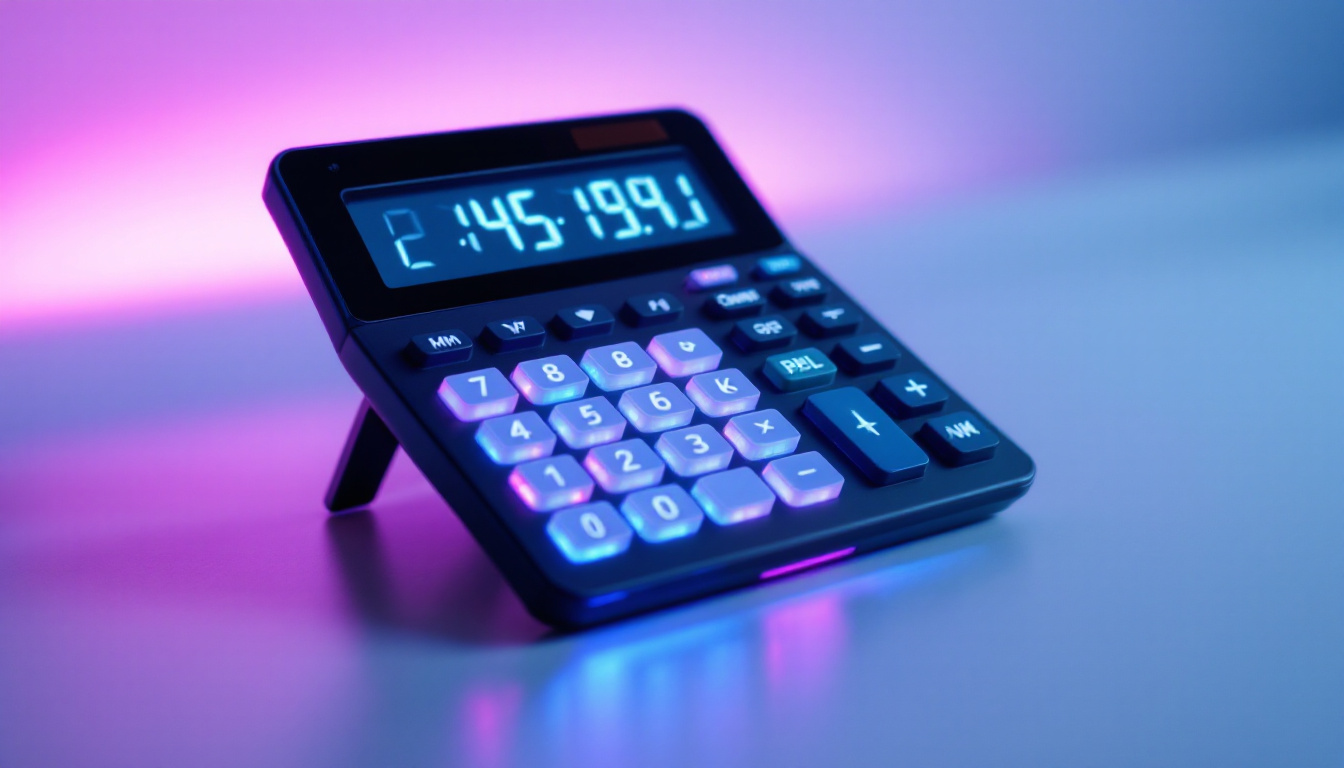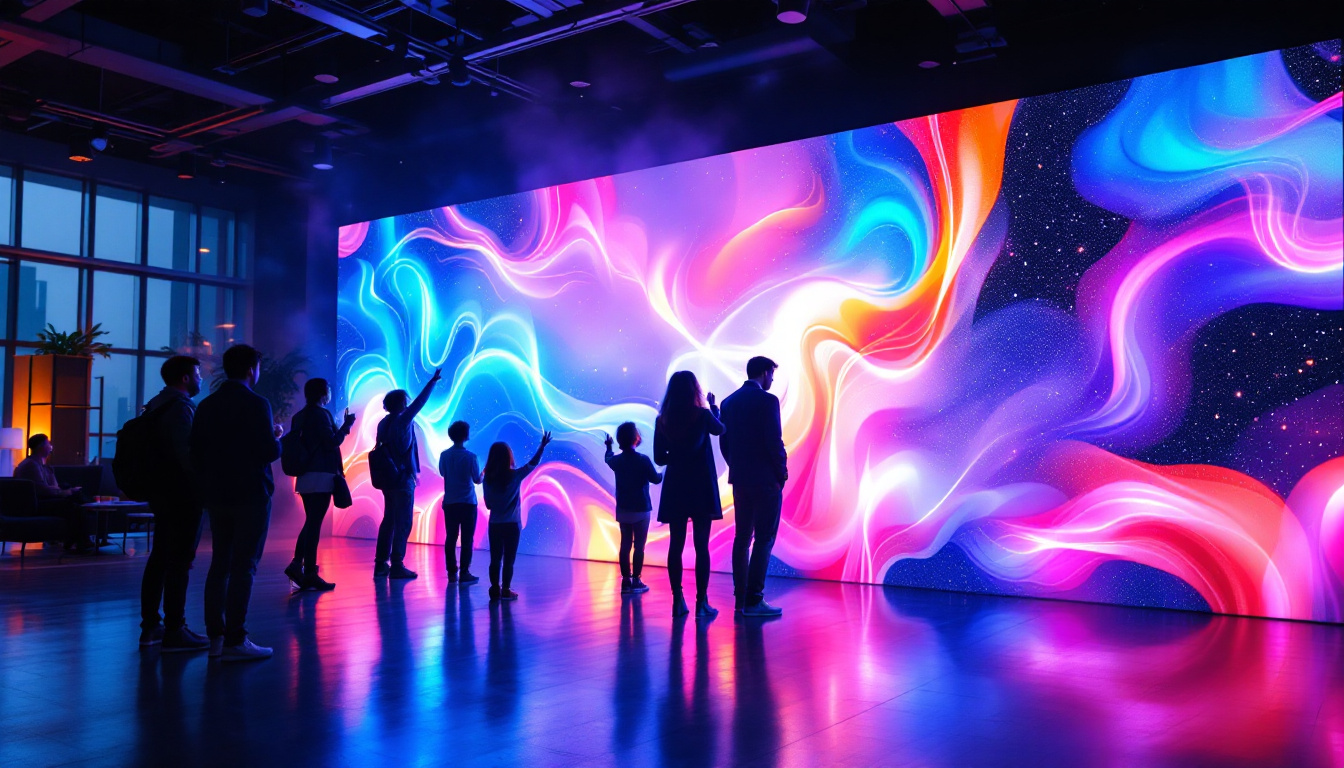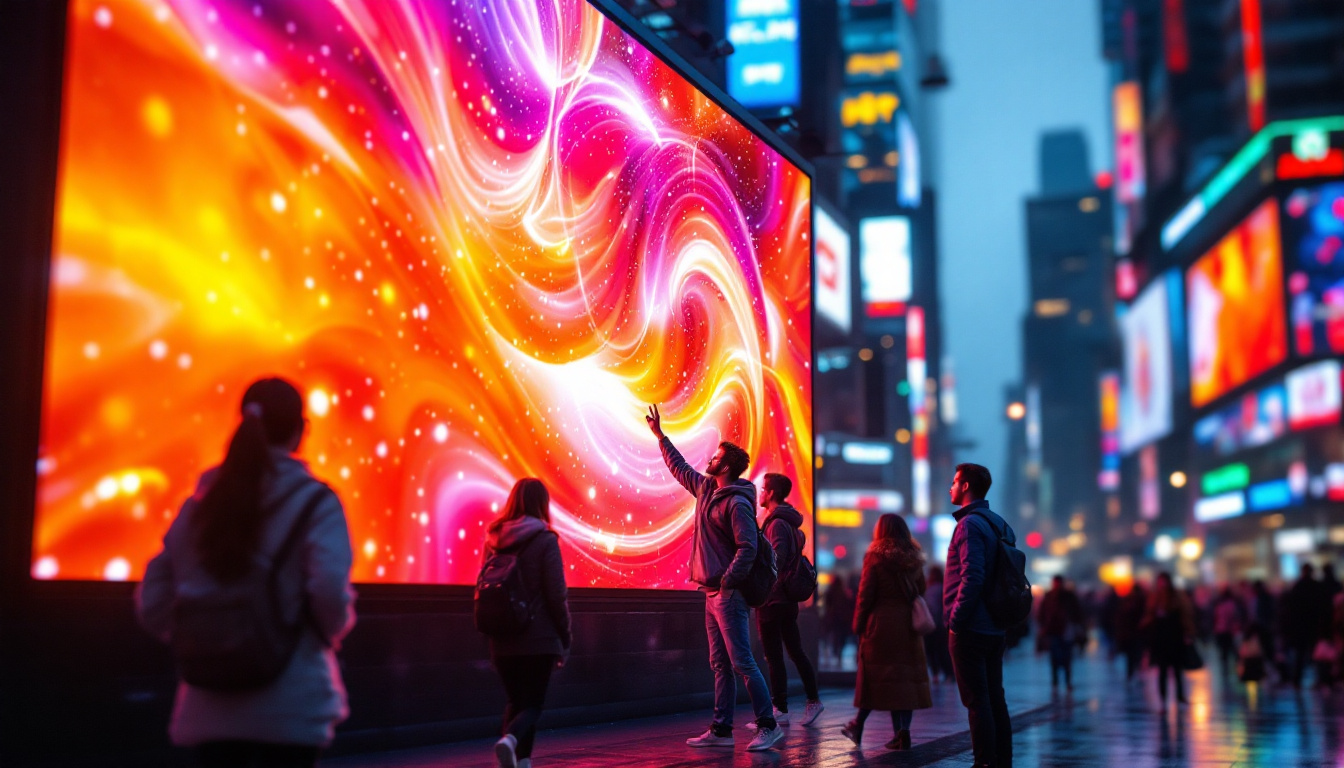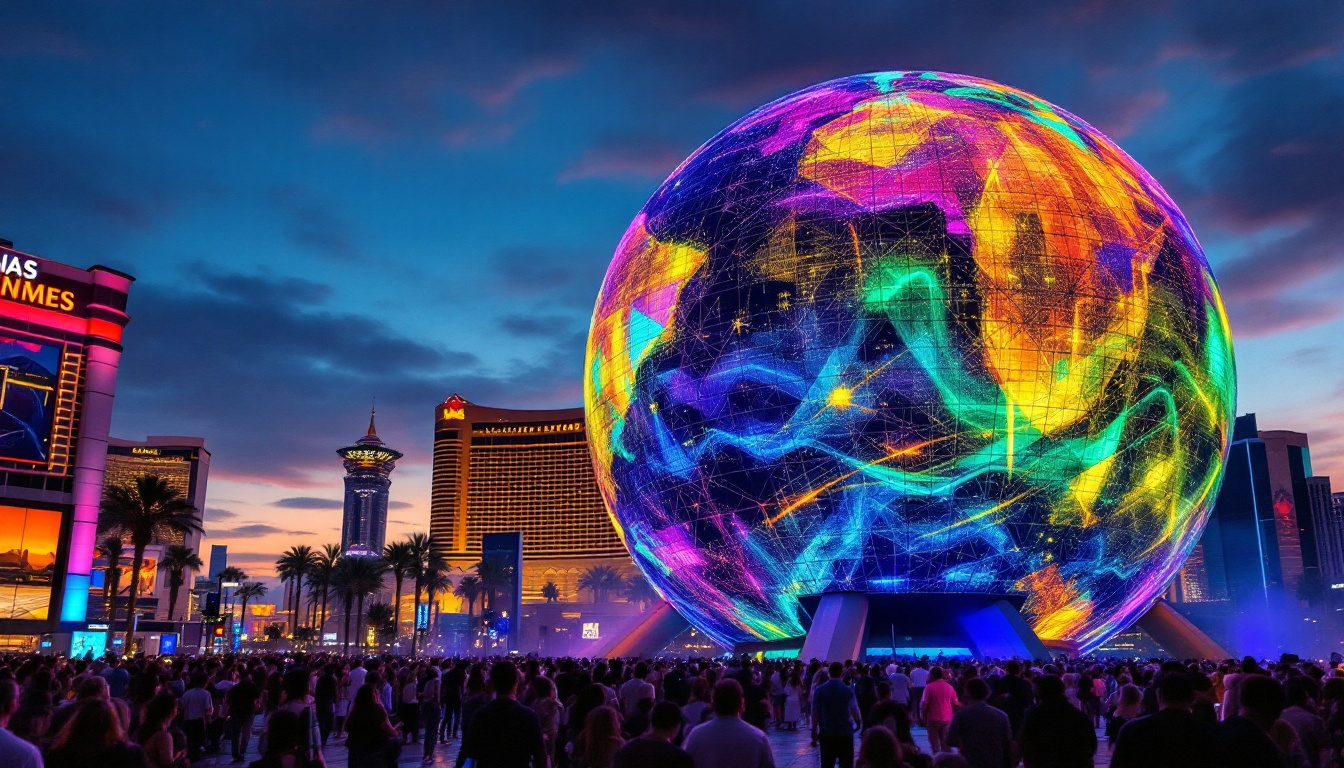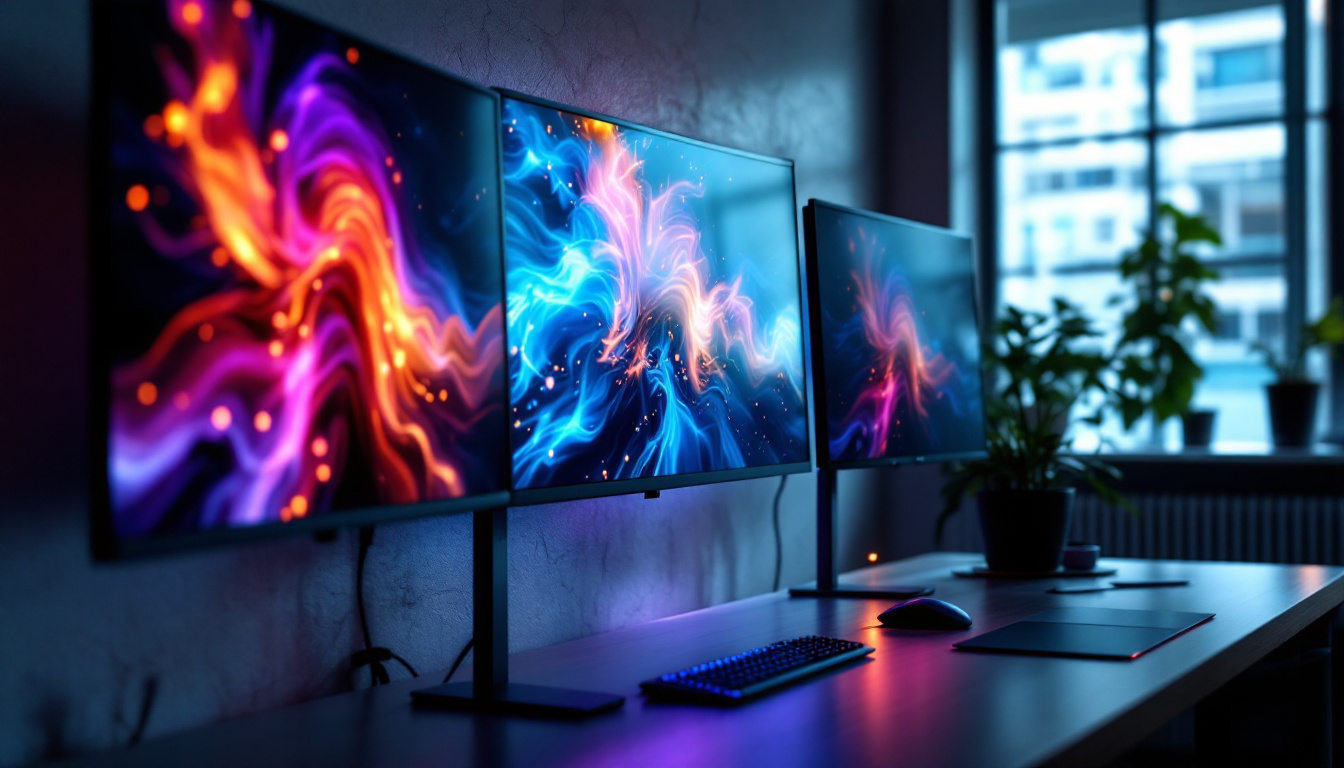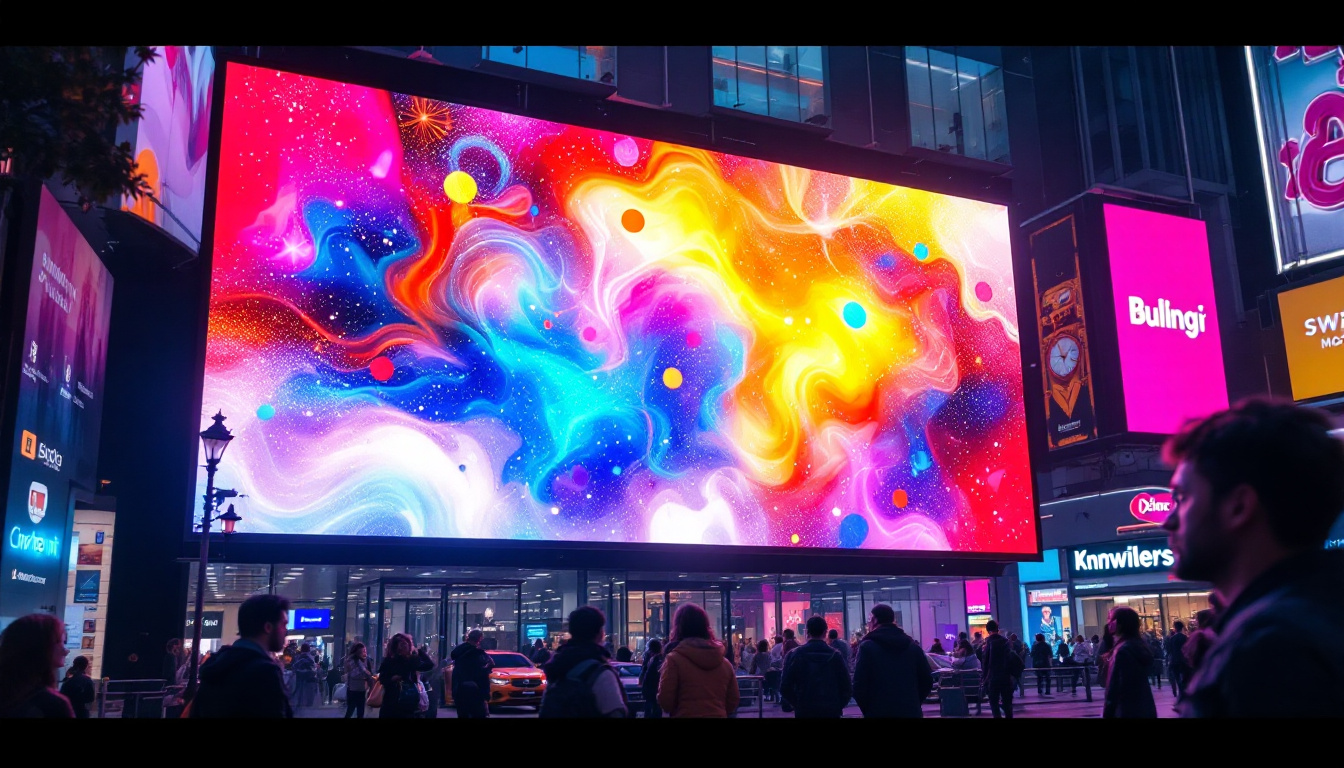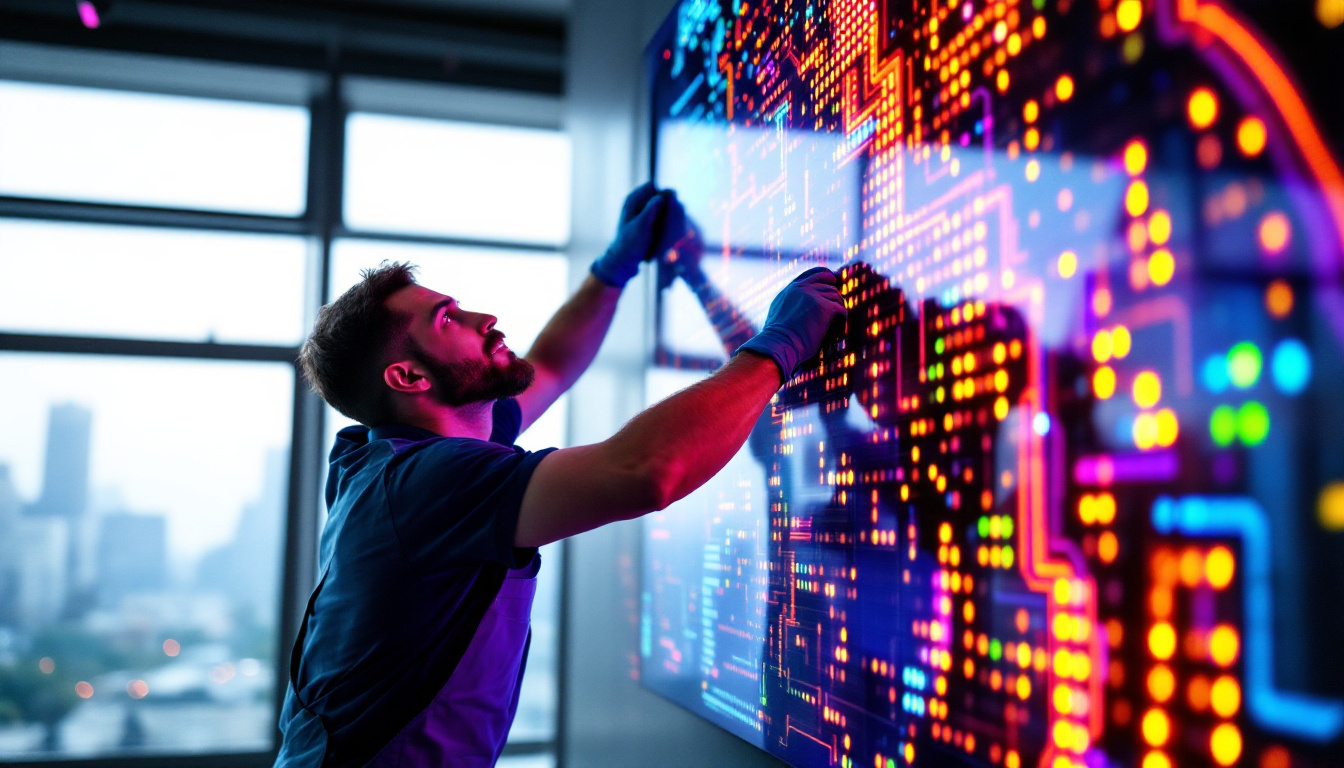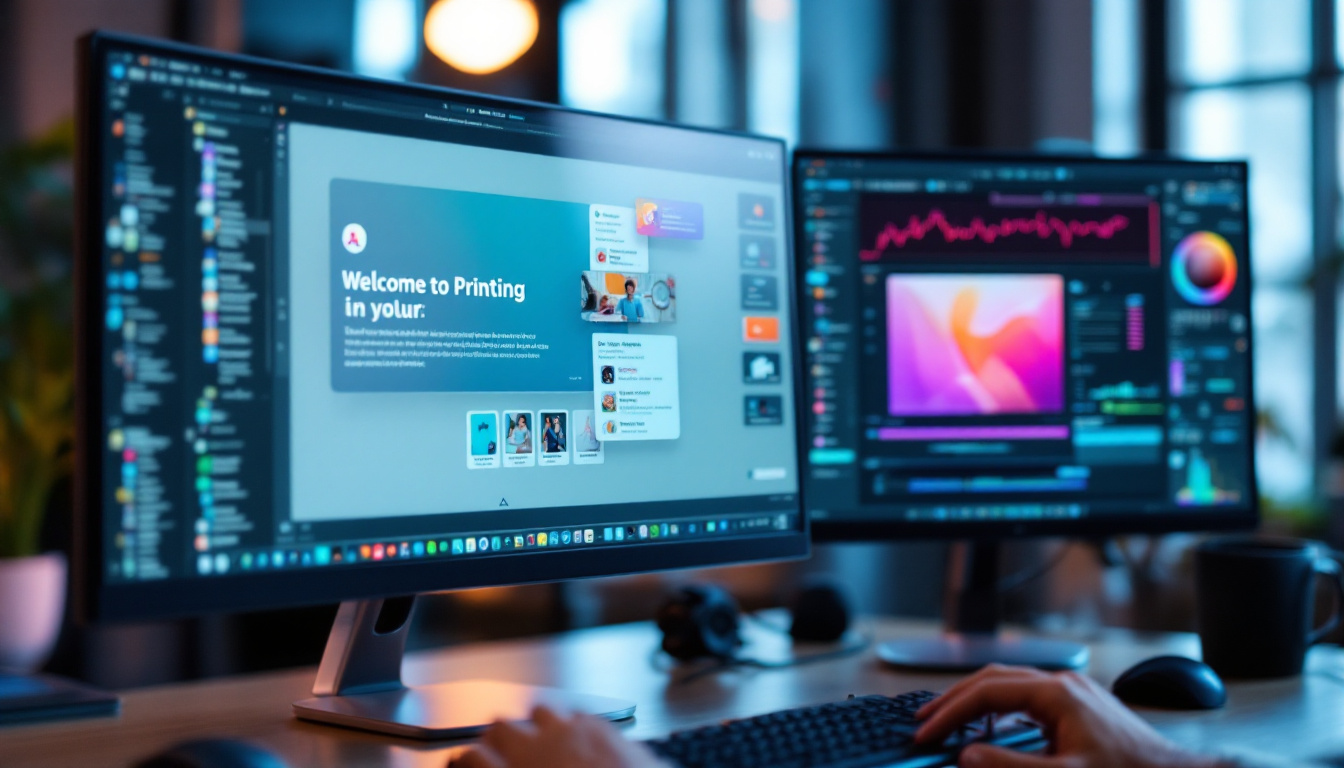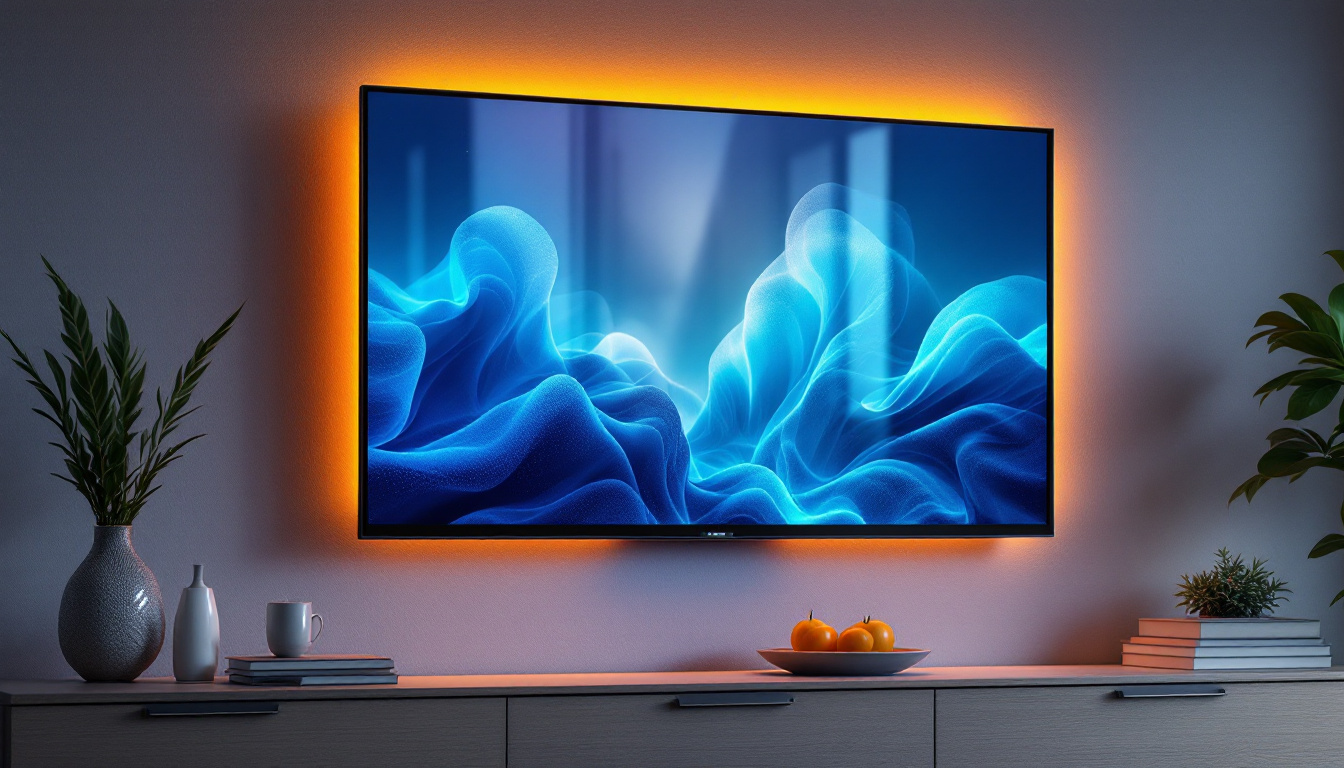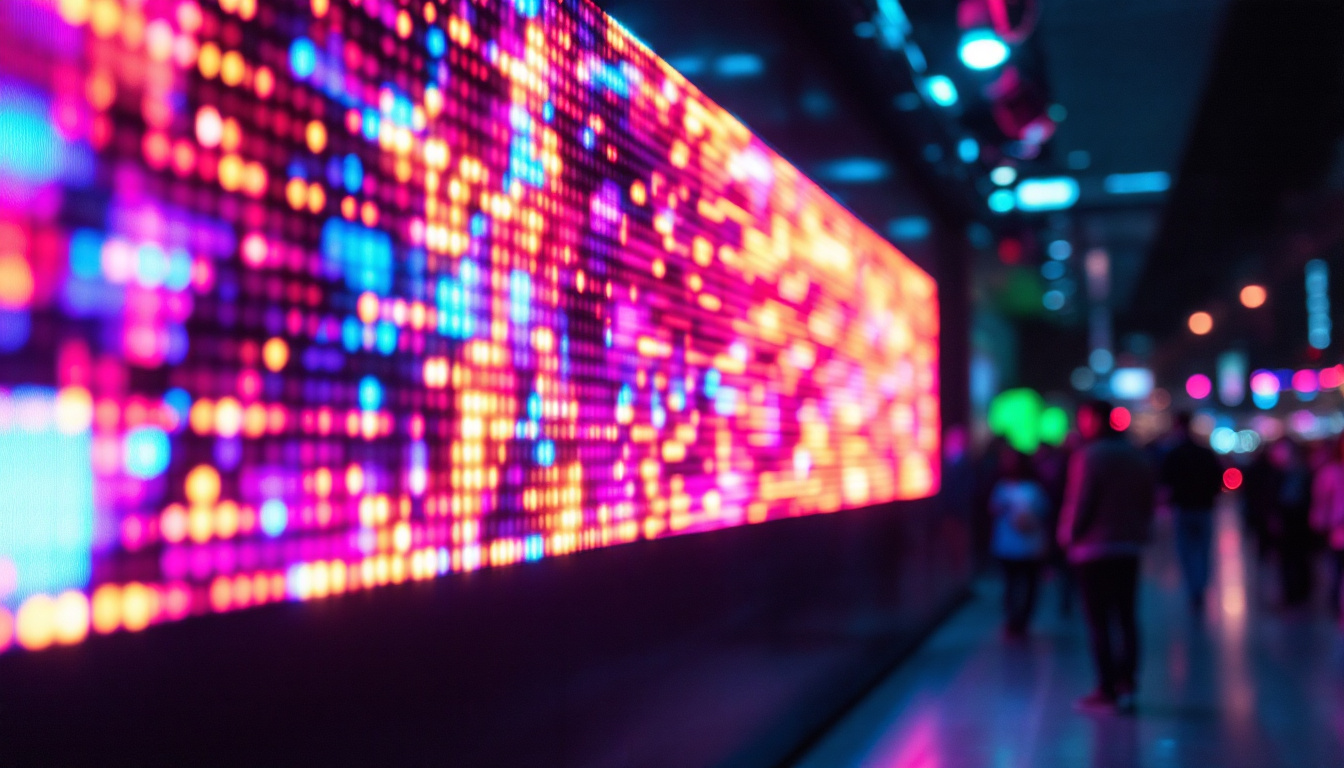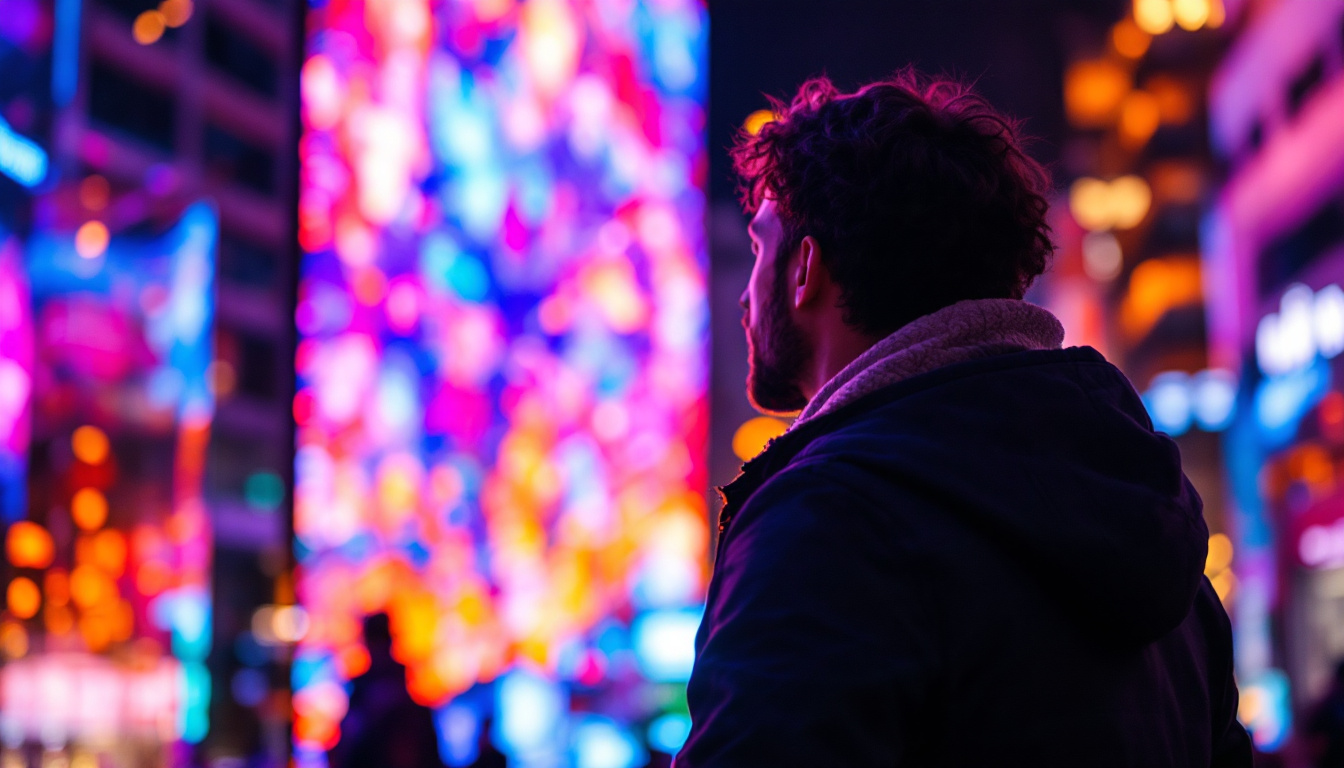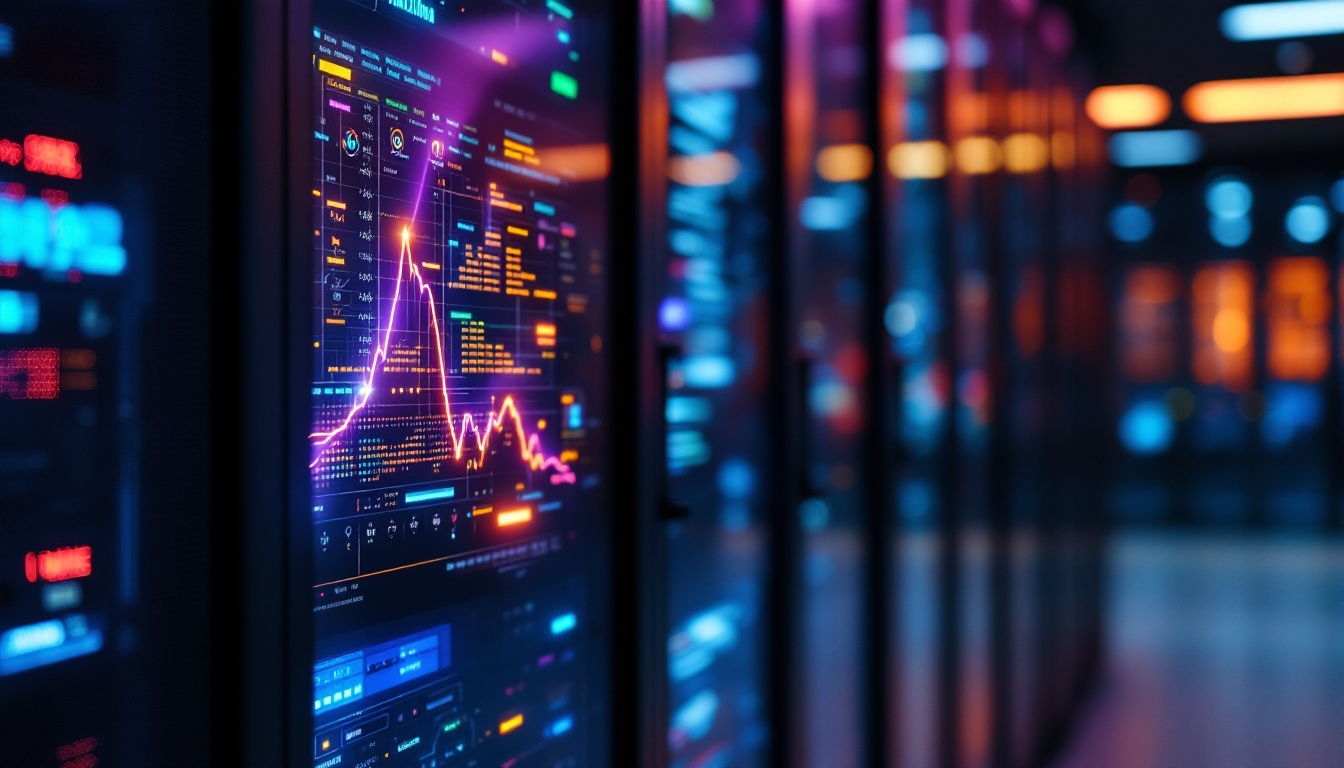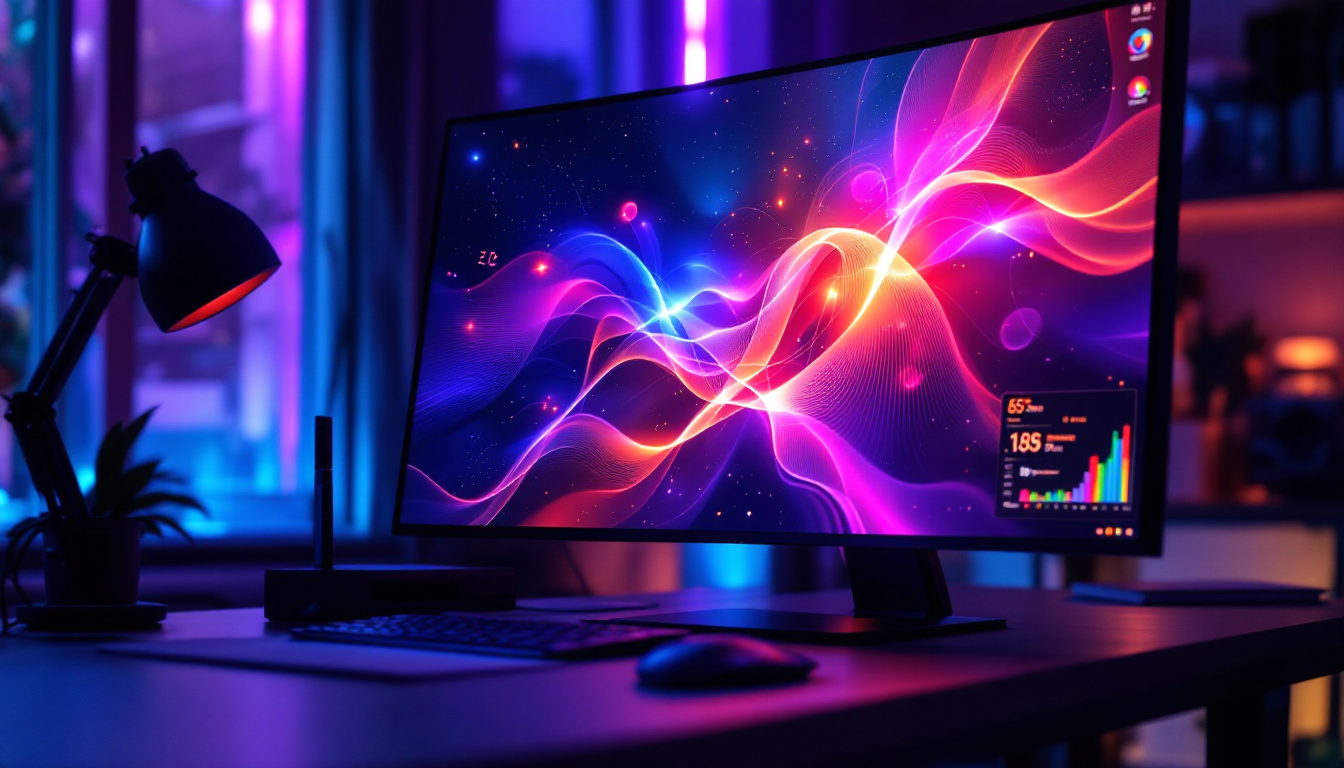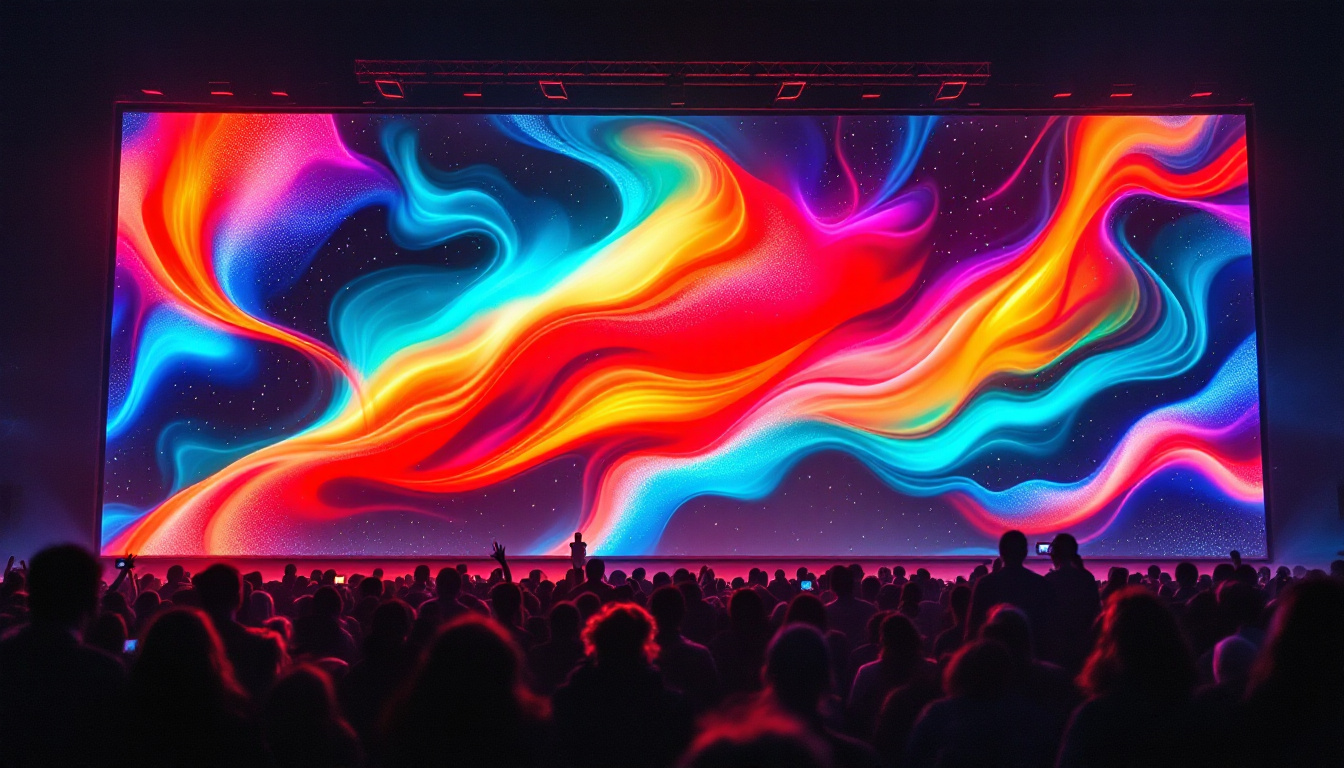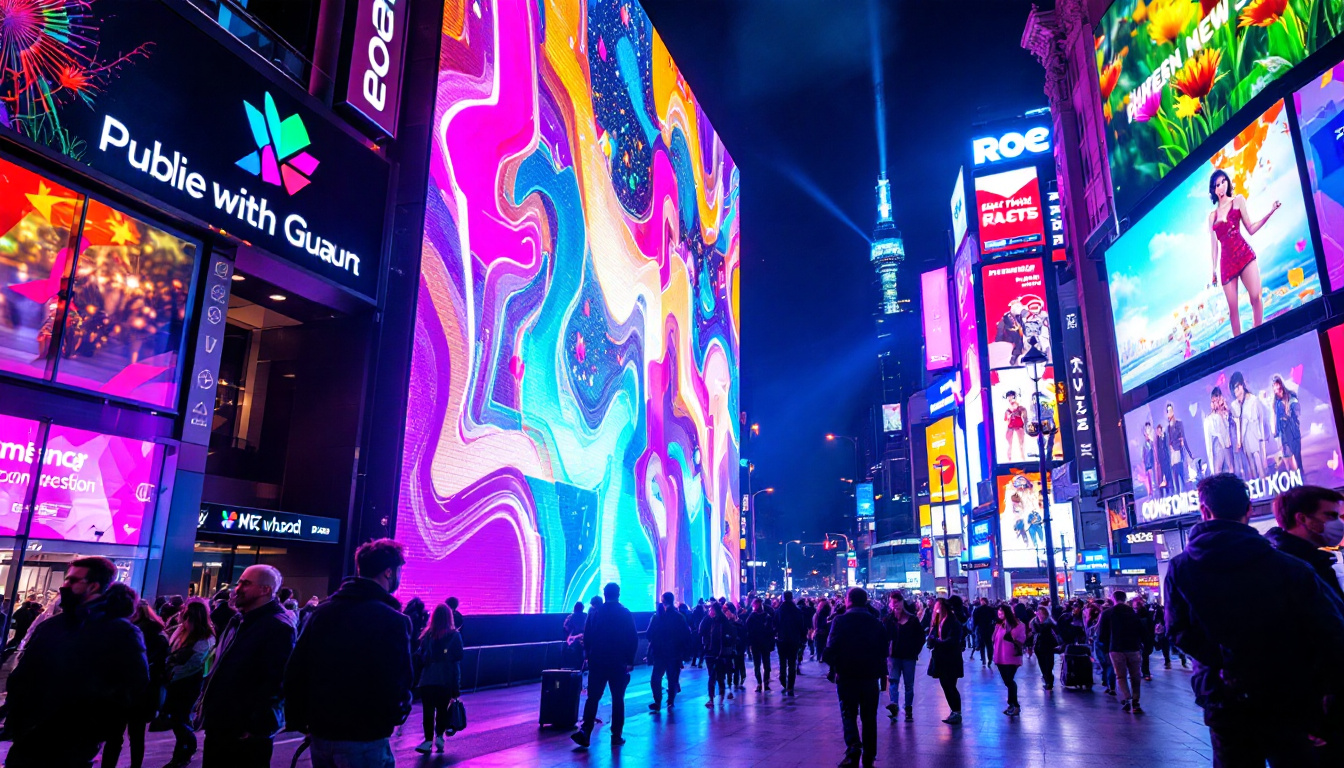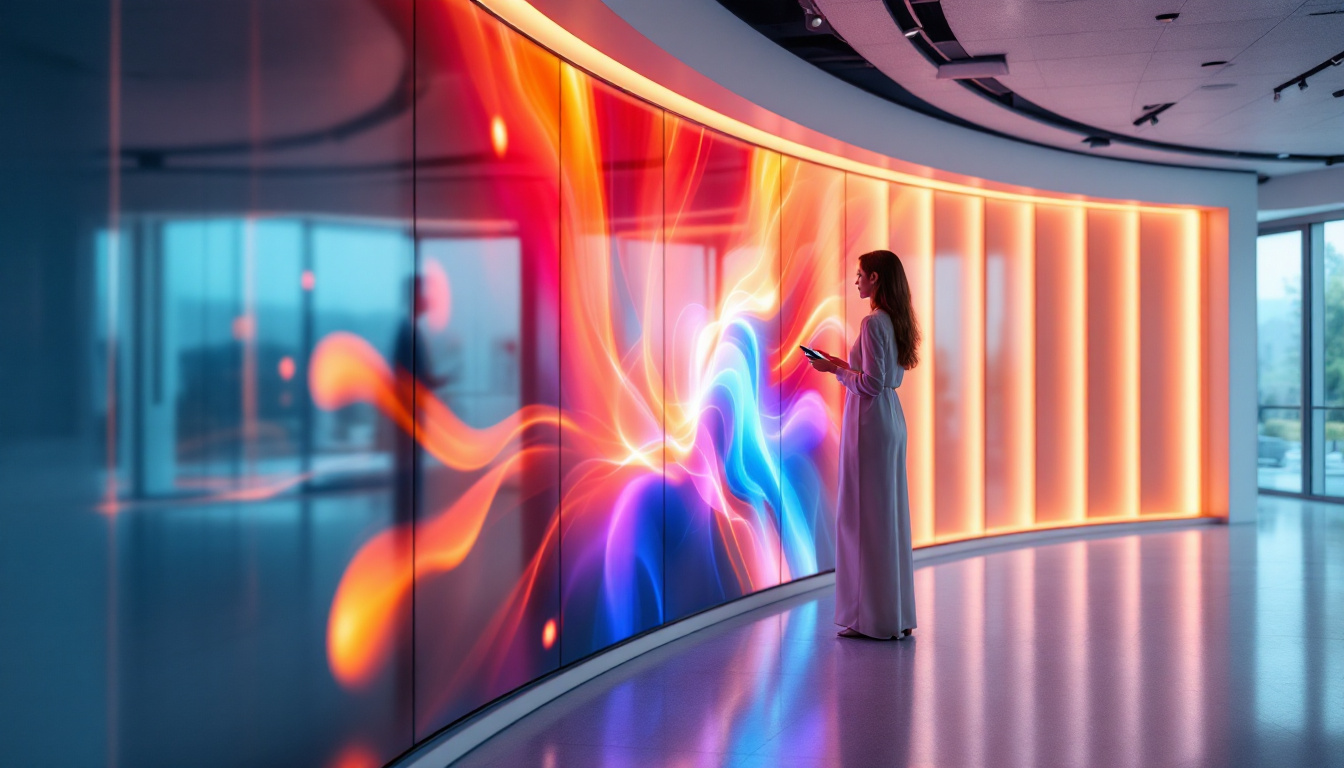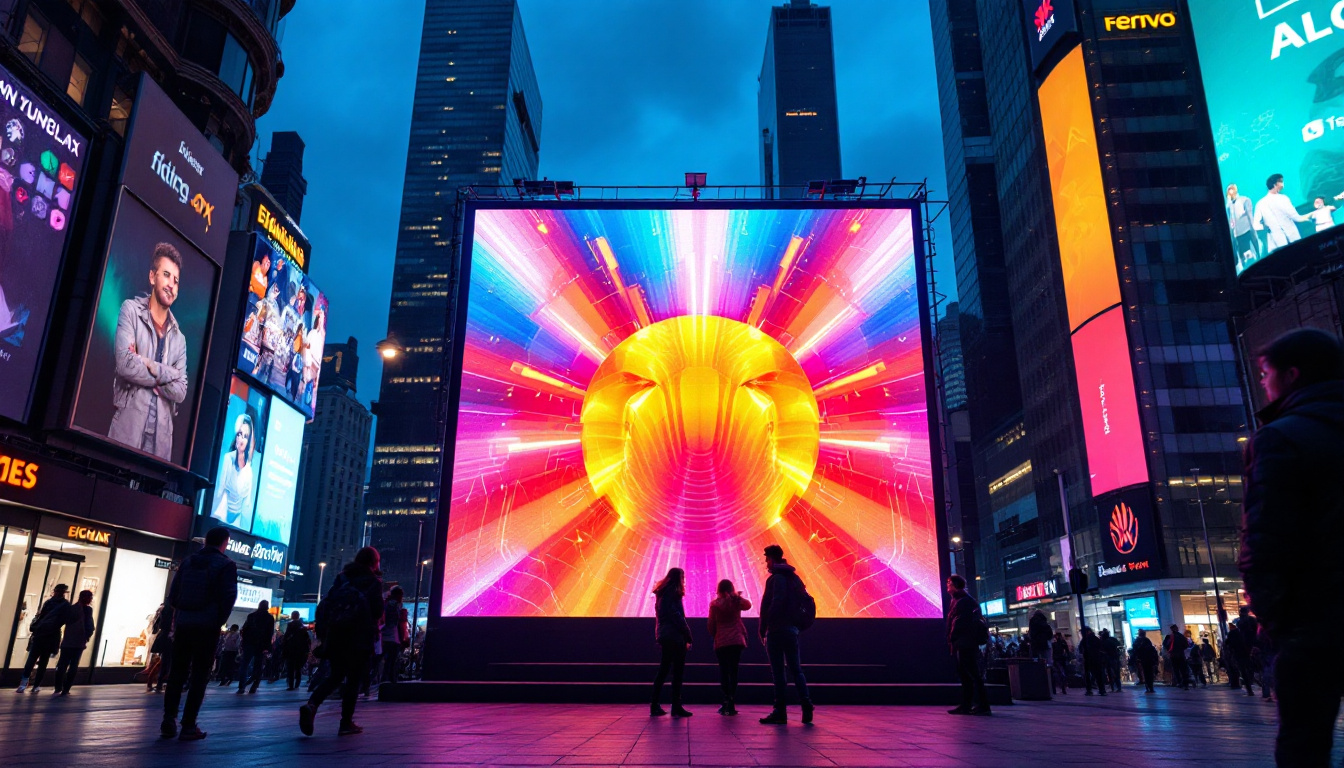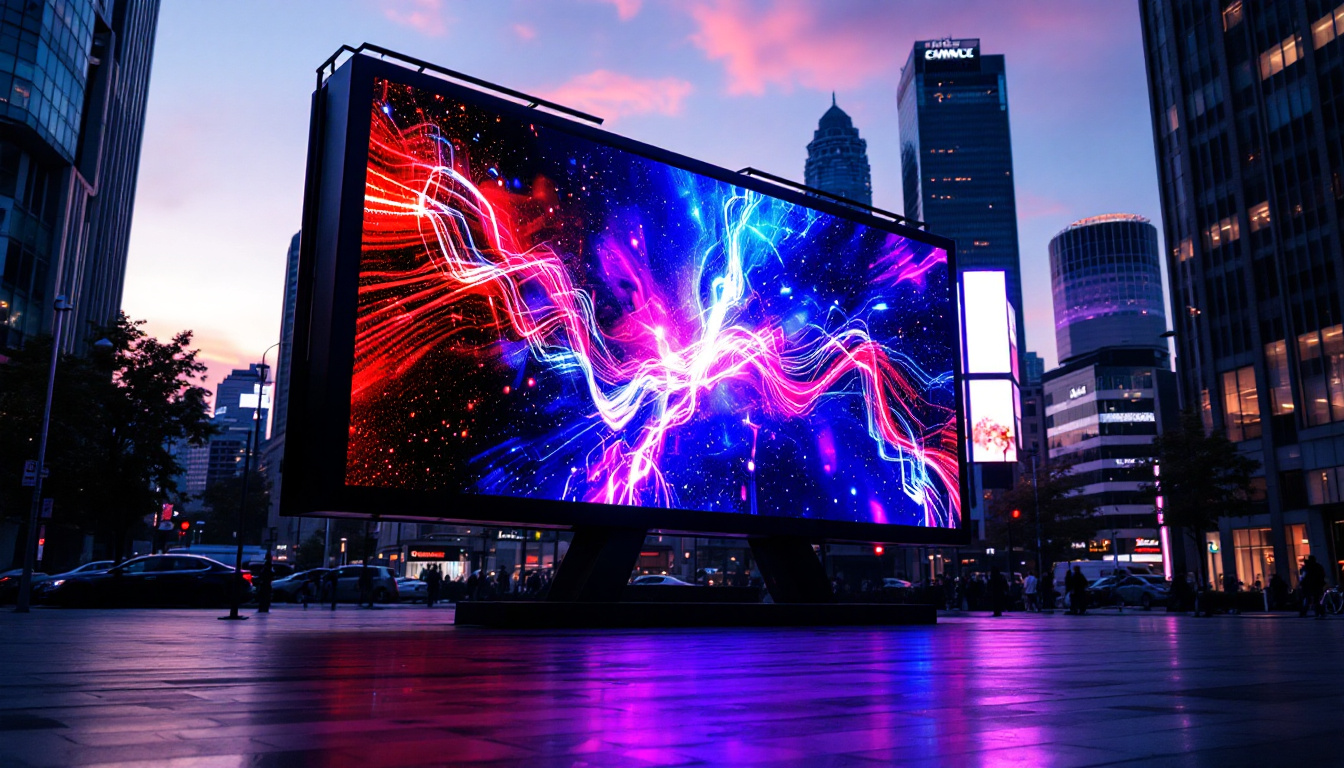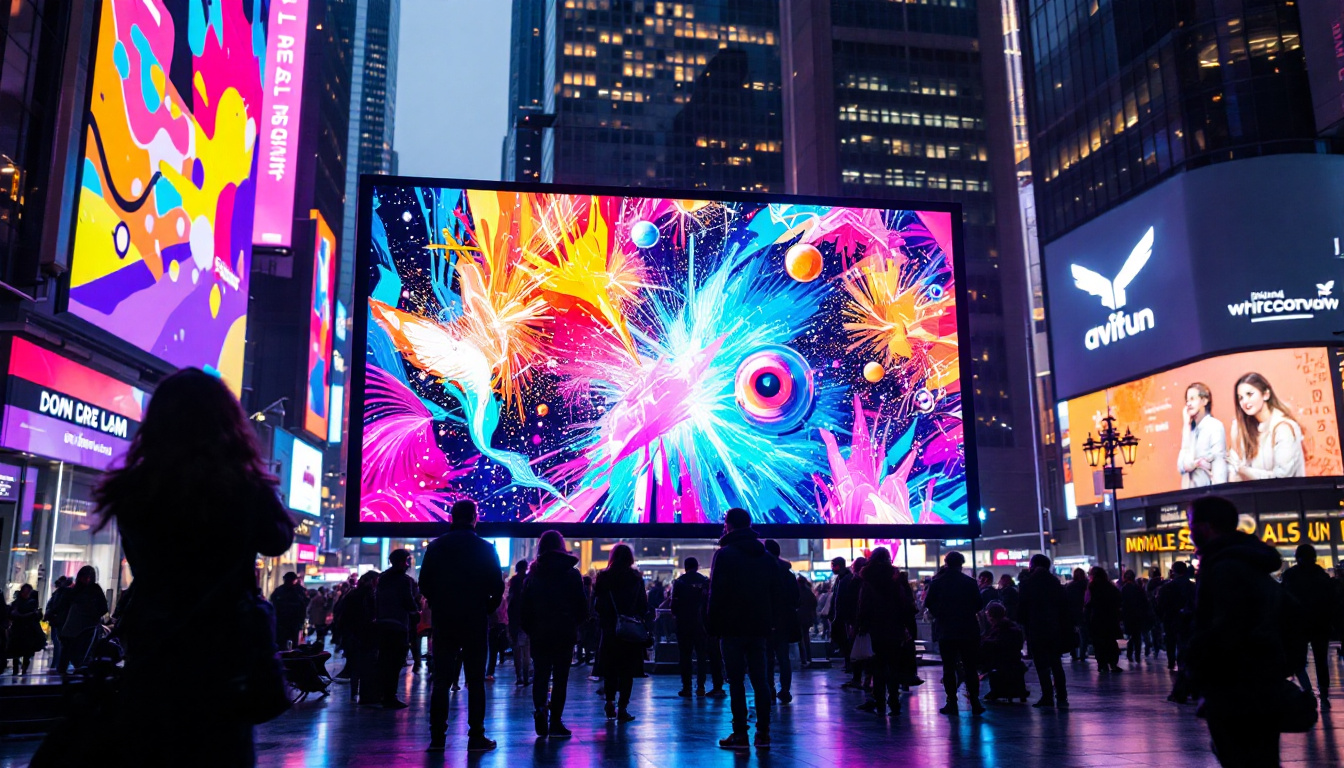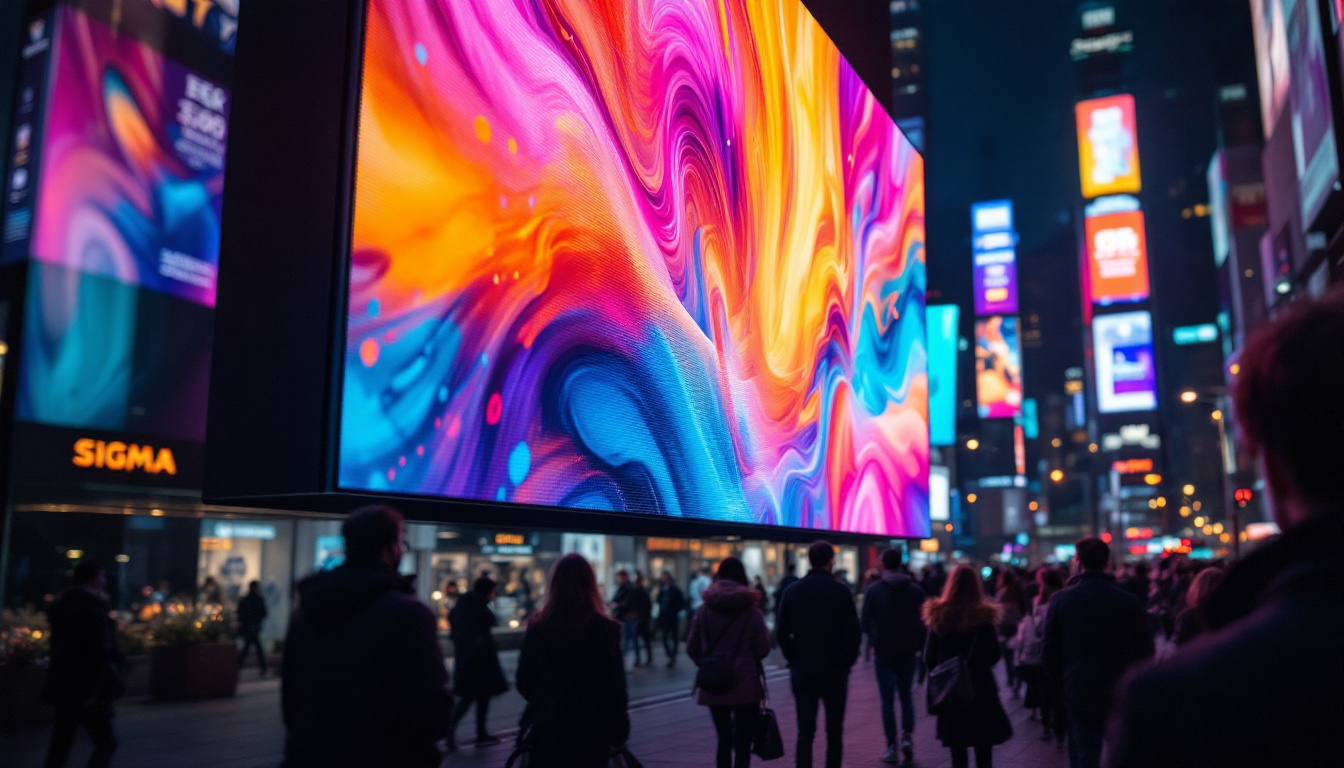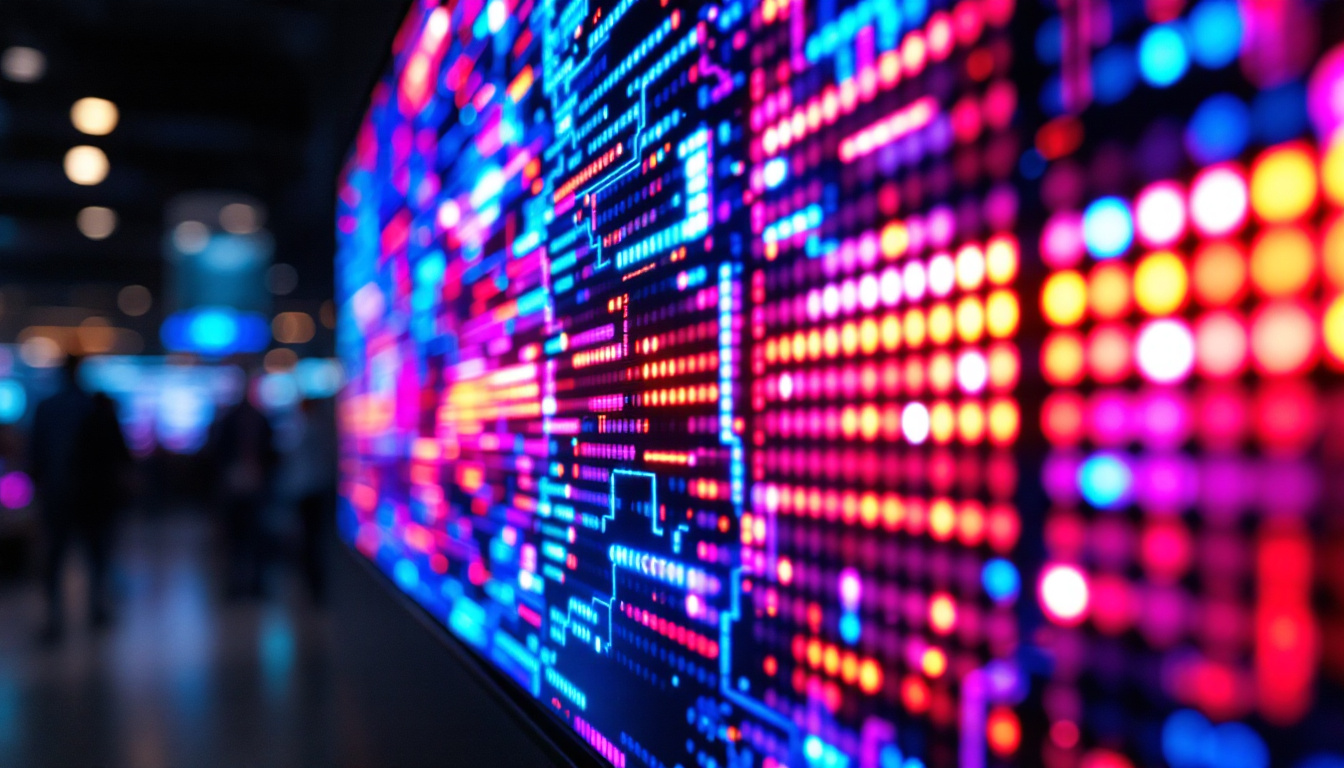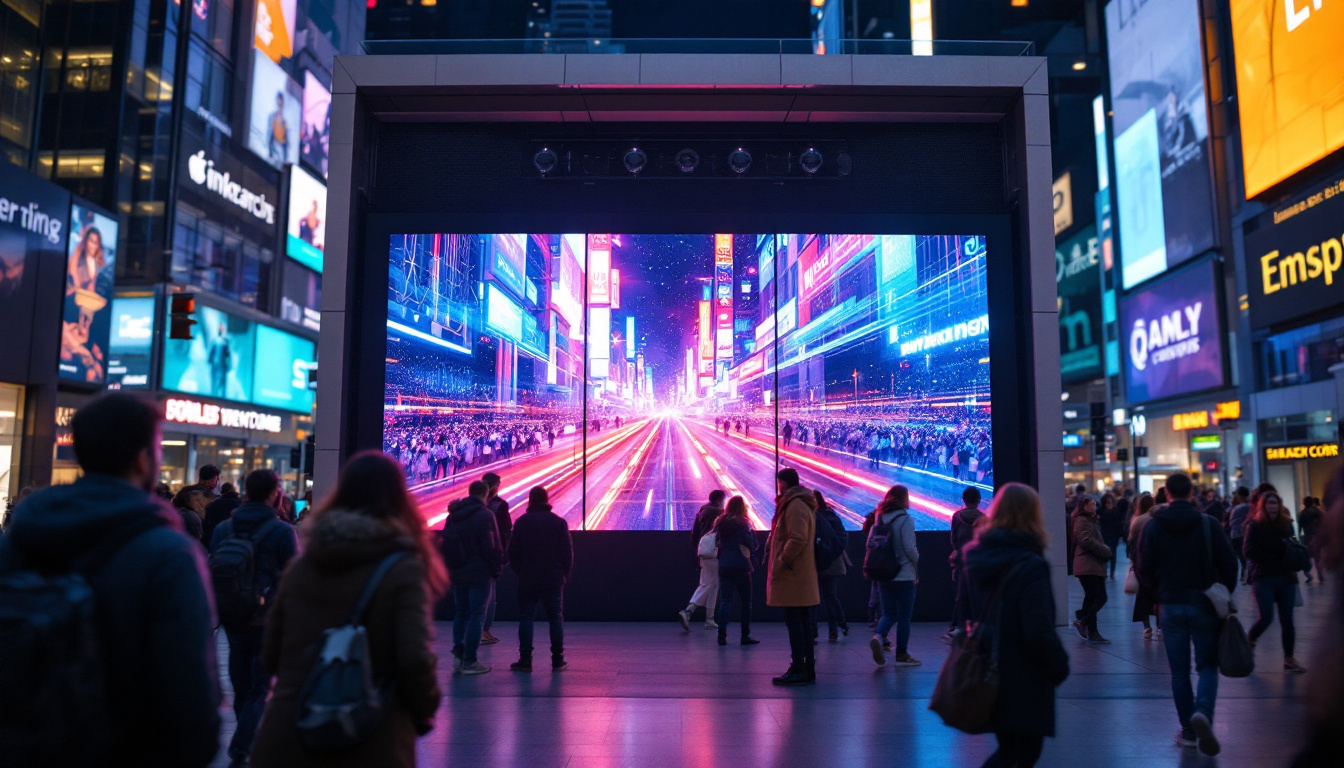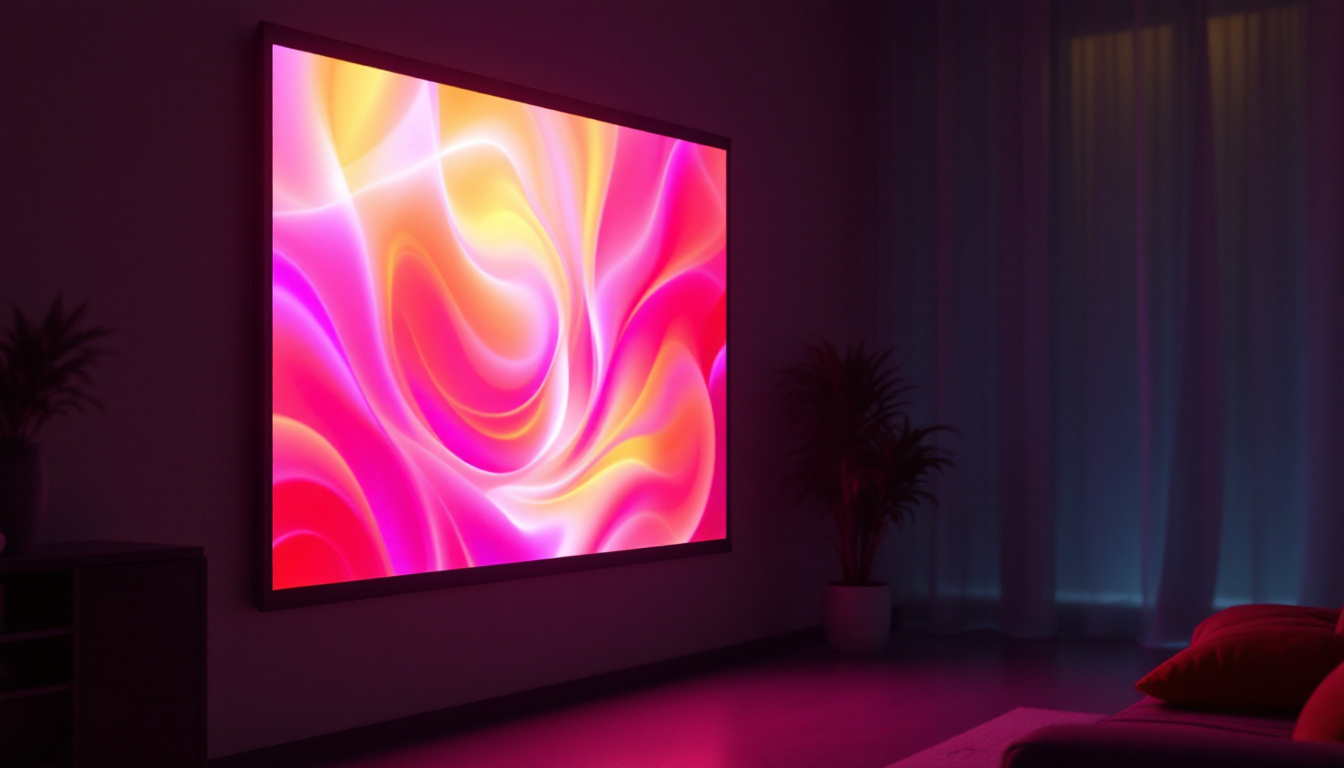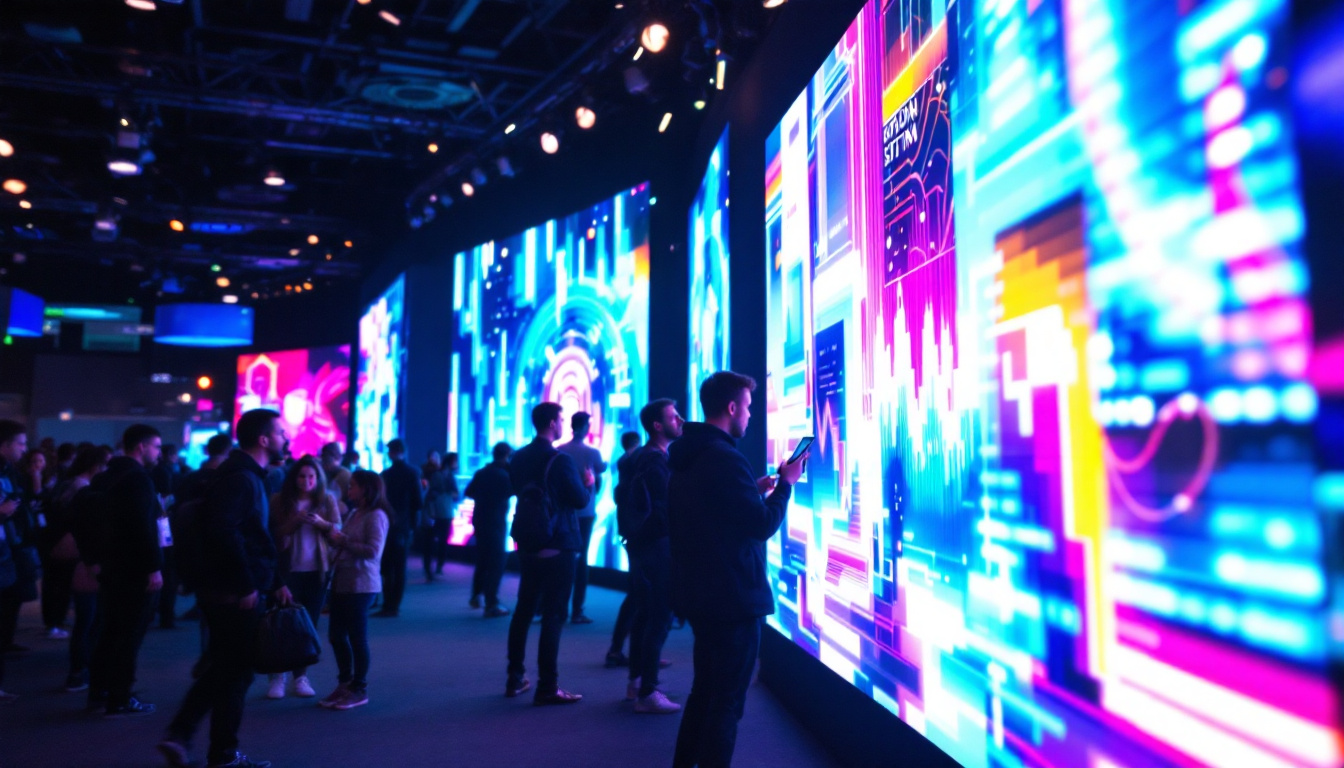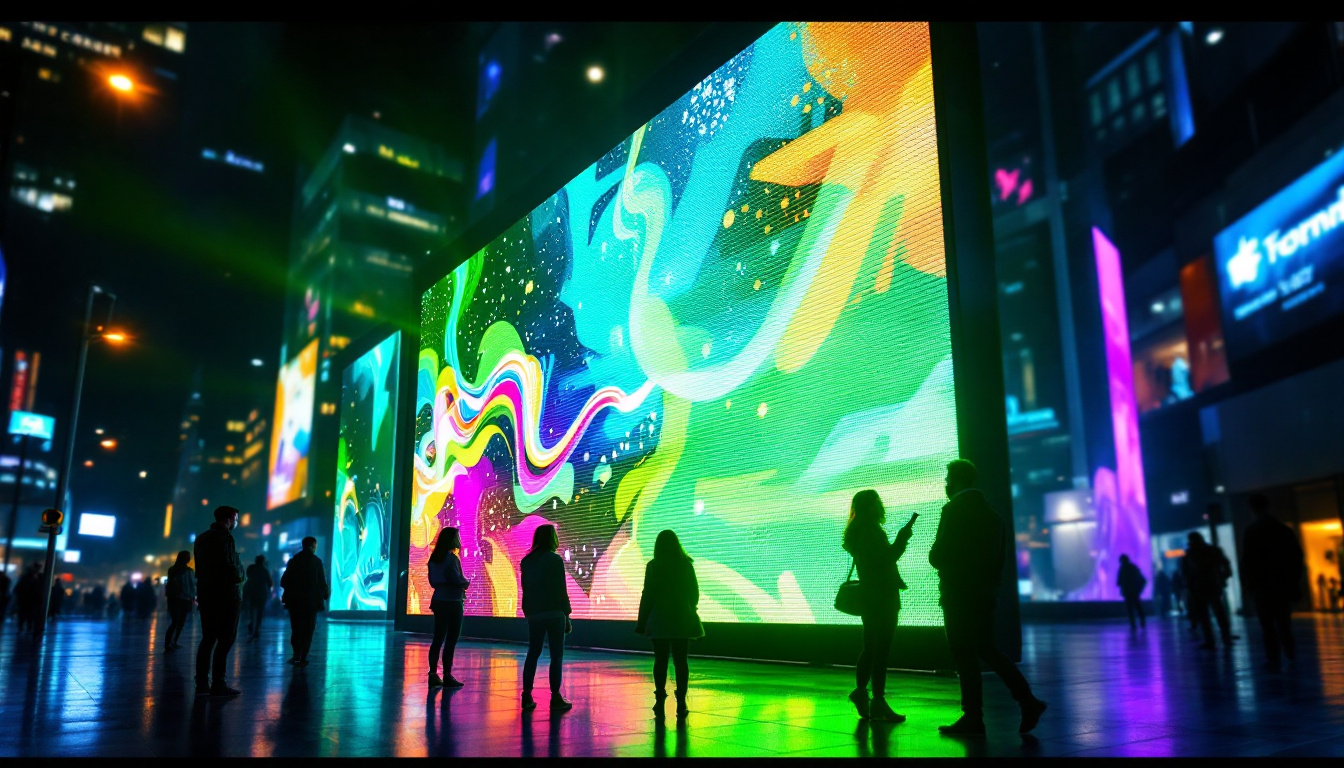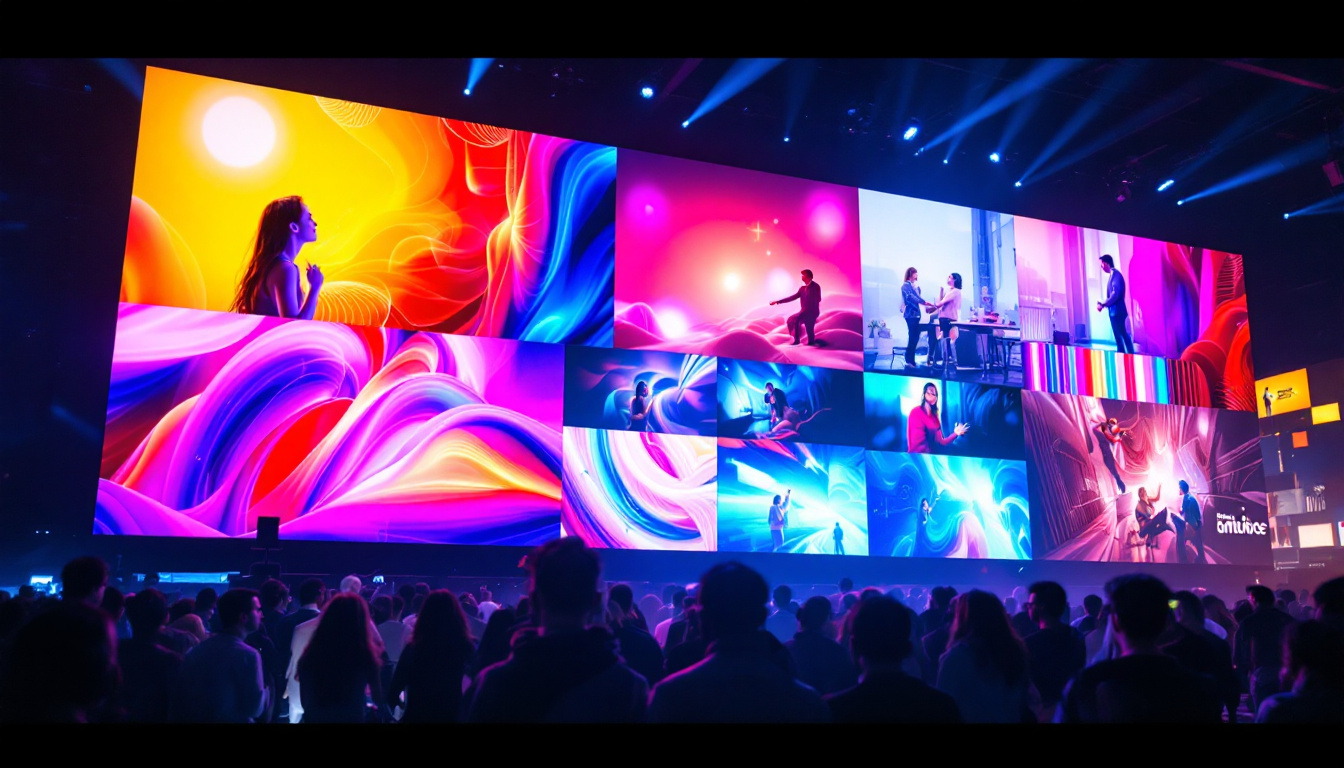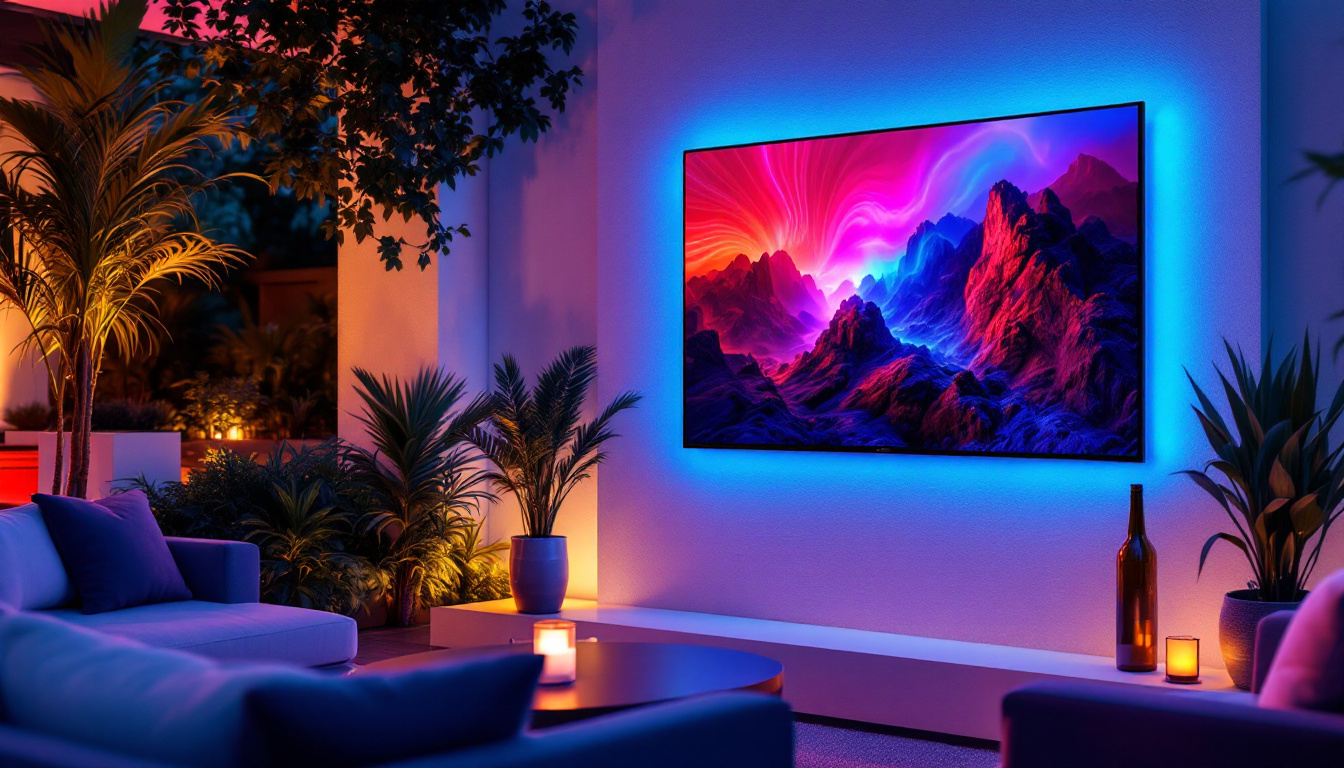In the modern world, LED display screens have become ubiquitous, transforming the way we communicate information visually. From large outdoor billboards to small handheld devices, LED technology has revolutionized the display industry. This article delves into the intricacies of LED display screen panels, exploring their functionality, types, applications, and advantages.
Understanding LED Technology
LED, or Light Emitting Diode, is a semiconductor device that emits light when an electric current passes through it. This technology has evolved significantly since its inception, leading to the development of various types of LED displays. The fundamental principle behind LED displays is the ability to convert electrical energy into light energy, providing a highly efficient and versatile means of visual communication.
How LED Displays Work
At the core of an LED display are numerous tiny diodes that collectively form a larger screen. Each diode can emit different colors of light, typically red, green, or blue (RGB). By adjusting the intensity of these colors, an LED display can produce a wide spectrum of colors, allowing for vibrant images and videos. The arrangement of these diodes determines the resolution of the display, with higher resolutions providing clearer and more detailed images.
LED displays can be categorized into two main types: direct view and rear projection. Direct view displays consist of individual LEDs that are visible to the viewer, while rear projection displays use LEDs to illuminate a screen from behind. Each type has its own advantages and is suited for different applications, which will be explored in the following sections.
The Evolution of LED Displays
The journey of LED technology began in the early 1960s with the invention of the first visible-spectrum LED. Since then, advancements in materials and manufacturing processes have led to the development of high-brightness LEDs, enabling their use in various applications. Over the years, LED displays have transitioned from simple numeric displays to complex, full-color screens capable of displaying high-definition video content.
Today, LED displays are not only used in consumer electronics but have also found applications in advertising, entertainment, and information dissemination. Their evolution continues as technology advances, leading to even more innovative applications and improved performance.
Types of LED Display Screens
LED display screens come in various types, each designed for specific uses and environments. Understanding these types is crucial for selecting the right display for a given application.
Indoor LED Displays
Indoor LED displays are designed for use in controlled environments, such as shopping malls, conference rooms, and theaters. These displays typically have a higher pixel density, resulting in sharper images and better color reproduction. Indoor displays are often used for advertising, presentations, and entertainment, providing a vibrant and engaging visual experience.
One of the key features of indoor LED displays is their ability to operate at lower brightness levels, making them suitable for environments with ambient lighting. This ensures that the content remains visible without being overly harsh on the eyes. Additionally, indoor LED displays often come in modular designs, allowing for easy customization and scalability.
Outdoor LED Displays
Outdoor LED displays are built to withstand various weather conditions, including rain, snow, and extreme temperatures. These displays are typically larger and have a lower pixel density compared to indoor displays, allowing for visibility from greater distances. Outdoor LED displays are commonly used for billboards, sports arenas, and public information displays.
One of the critical aspects of outdoor LED displays is their high brightness levels, which ensure visibility even in direct sunlight. They are also designed with protective coatings to resist UV damage and moisture, ensuring longevity and durability. The ability to display dynamic content, such as advertisements and real-time information, makes outdoor LED displays an effective tool for communication.
Transparent LED Displays
Transparent LED displays represent a cutting-edge innovation in display technology. These displays are designed to allow light to pass through them, making them ideal for applications where visibility is essential. Transparent LED displays can be used in storefronts, museums, and exhibitions, providing an engaging way to showcase products or information without obstructing the view behind the screen.
The unique design of transparent LED displays allows for creative installations, where the display can be integrated into architectural elements. This versatility opens up new possibilities for advertising and information dissemination, allowing businesses to capture attention without compromising aesthetics.
Applications of LED Displays
The versatility of LED display technology has led to its adoption across various industries. From advertising to entertainment, the applications of LED displays are vast and continually expanding.
Advertising and Marketing
One of the most prominent applications of LED displays is in advertising and marketing. Businesses utilize LED screens to showcase their products and services in eye-catching ways. The dynamic nature of LED displays allows for changing content, enabling advertisers to reach their audience effectively. This flexibility is particularly beneficial for promotions, seasonal campaigns, and event announcements.
Outdoor LED billboards, for instance, can display multiple advertisements within a short time frame, maximizing exposure and engagement. Indoor LED displays in retail environments can enhance the shopping experience by providing information, promotions, and engaging visuals that attract customers.
Entertainment and Events
In the entertainment industry, LED displays play a crucial role in concerts, festivals, and sporting events. Large LED screens are often used to broadcast live performances, allowing audiences to see details from a distance. The vibrant colors and high contrast of LED displays enhance the overall experience, making events more immersive.
Moreover, LED displays are commonly used in stage productions and theater performances. They can create dynamic backdrops, display video content, and even interact with performers, adding depth and creativity to the presentation. This versatility has made LED displays an essential tool for modern entertainment.
Information and Communication
LED displays are also widely used for information dissemination in various settings. Transportation hubs, such as airports and train stations, utilize LED screens to provide real-time updates on schedules, delays, and other vital information. These displays are crucial for ensuring that passengers have access to the information they need to navigate their journeys smoothly.
Additionally, educational institutions use LED displays for announcements, schedules, and event promotions. The ability to display information dynamically allows for quick updates and enhances communication within the institution. In corporate environments, LED displays can be used for presentations, meetings, and internal communications, fostering a more connected workplace.
Advantages of LED Display Screens
The increasing popularity of LED display screens can be attributed to their numerous advantages over traditional display technologies. Understanding these benefits can help businesses and organizations make informed decisions when selecting display solutions.
Energy Efficiency
One of the most significant advantages of LED displays is their energy efficiency. Compared to traditional display technologies, such as LCD or plasma, LED displays consume significantly less power. This energy efficiency not only reduces operational costs but also contributes to environmental sustainability.
Moreover, LED displays have a longer lifespan, often lasting tens of thousands of hours. This longevity further enhances their cost-effectiveness, as businesses can reduce maintenance and replacement expenses over time.
High Brightness and Contrast
LED displays are known for their high brightness levels and excellent contrast ratios. This ensures that content remains visible even in bright environments, making them suitable for both indoor and outdoor applications. The ability to produce vibrant colors and deep blacks enhances the overall visual experience, attracting and retaining viewer attention.
The superior image quality of LED displays makes them ideal for applications requiring high-definition content, such as video walls and large-scale presentations. The clarity and detail provided by LED technology elevate the standard for visual communication.
Flexibility and Versatility
LED displays offer remarkable flexibility and versatility in design and application. They can be customized in size, shape, and resolution to meet specific requirements. This adaptability allows businesses to create unique installations that align with their branding and messaging.
Furthermore, the modular nature of many LED displays enables easy scaling. Businesses can start with a smaller display and expand as needed, making it a cost-effective solution for growing organizations. The creative possibilities with LED displays are virtually limitless, allowing for innovative and engaging visual experiences.
Challenges and Considerations
While LED displays offer numerous advantages, there are also challenges and considerations that businesses should keep in mind when implementing this technology. Understanding these factors is essential for making informed decisions.
Initial Costs
The initial investment for LED display technology can be higher than traditional display options. Businesses need to consider their budget and the long-term benefits of LED displays when making purchasing decisions. While the upfront costs may be significant, the energy savings and longevity of LED displays can offset these expenses over time.
It is crucial to conduct a thorough cost-benefit analysis to determine the return on investment (ROI) associated with LED displays. This analysis should take into account not only the purchase price but also operational costs, maintenance, and potential revenue generated through advertising or enhanced customer engagement.
Maintenance and Technical Support
LED displays require regular maintenance to ensure optimal performance. This includes cleaning, calibration, and software updates. Businesses should factor in these maintenance needs when planning their display strategy. Additionally, having access to technical support is vital, as issues can arise that require prompt resolution to minimize downtime.
Establishing a relationship with a reliable service provider can help ensure that any technical challenges are addressed quickly and efficiently, allowing businesses to maximize the benefits of their LED displays.
Future Trends in LED Display Technology
The LED display industry is continuously evolving, with new technologies and innovations emerging regularly. Understanding these trends can help businesses stay ahead of the curve and make informed decisions about their display strategies.
Advancements in Pixel Technology
One of the most exciting trends in LED display technology is the advancement in pixel technology. Companies are developing smaller and more efficient pixels, allowing for higher resolutions and improved image quality. This trend is particularly significant for applications requiring detailed visuals, such as virtual reality and augmented reality experiences.
As pixel technology continues to improve, businesses can expect even more immersive and engaging displays that enhance the viewer experience. This will open up new possibilities for creative applications and innovative advertising strategies.
Integration with Smart Technology
Another significant trend is the integration of LED displays with smart technology. This includes the use of sensors, data analytics, and connectivity features that allow displays to interact with their environment and audience. Smart LED displays can adapt content based on viewer demographics, weather conditions, or real-time data, creating personalized experiences that resonate with audiences.
This integration of smart technology enhances the effectiveness of LED displays in advertising and information dissemination, allowing businesses to tailor their messaging for maximum impact.
Environmental Sustainability
As businesses increasingly prioritize sustainability, the LED display industry is responding with eco-friendly solutions. Manufacturers are focusing on reducing the environmental impact of production processes and materials used in LED displays. This includes the development of recyclable components and energy-efficient manufacturing practices.
By investing in sustainable LED displays, businesses can align their marketing strategies with their corporate social responsibility goals, appealing to environmentally conscious consumers.
Conclusion
LED display screen panels have transformed the landscape of visual communication, offering unparalleled advantages in terms of energy efficiency, image quality, and versatility. As technology continues to advance, the applications and capabilities of LED displays will only expand, providing businesses with innovative ways to engage their audiences.
While there are challenges to consider, the benefits of LED displays far outweigh the drawbacks. By staying informed about the latest trends and advancements, businesses can leverage LED technology to enhance their marketing efforts, improve communication, and create memorable experiences for their customers.
In a world where visual communication is paramount, investing in LED display technology is not just a choice; it is a strategic decision that can drive success and growth in various industries.
Discover LumenMatrix’s Innovative LED Solutions
Ready to elevate your visual communication strategy with cutting-edge LED technology? Look no further than LumenMatrix, a pioneer in crafting dynamic and energy-efficient LED display modules tailored to your needs. From vibrant Indoor and Outdoor LED Wall Displays to specialized solutions like Vehicle, Sports, and Floor LED Displays, LumenMatrix offers an array of options to captivate your audience. Embrace the future of digital signage with our Custom, All-in-One, and Transparent LED Displays. Experience the transformative power of our LED solutions and let your brand shine. Check out LumenMatrix LED Display Solutions today and start creating unforgettable visual experiences.


